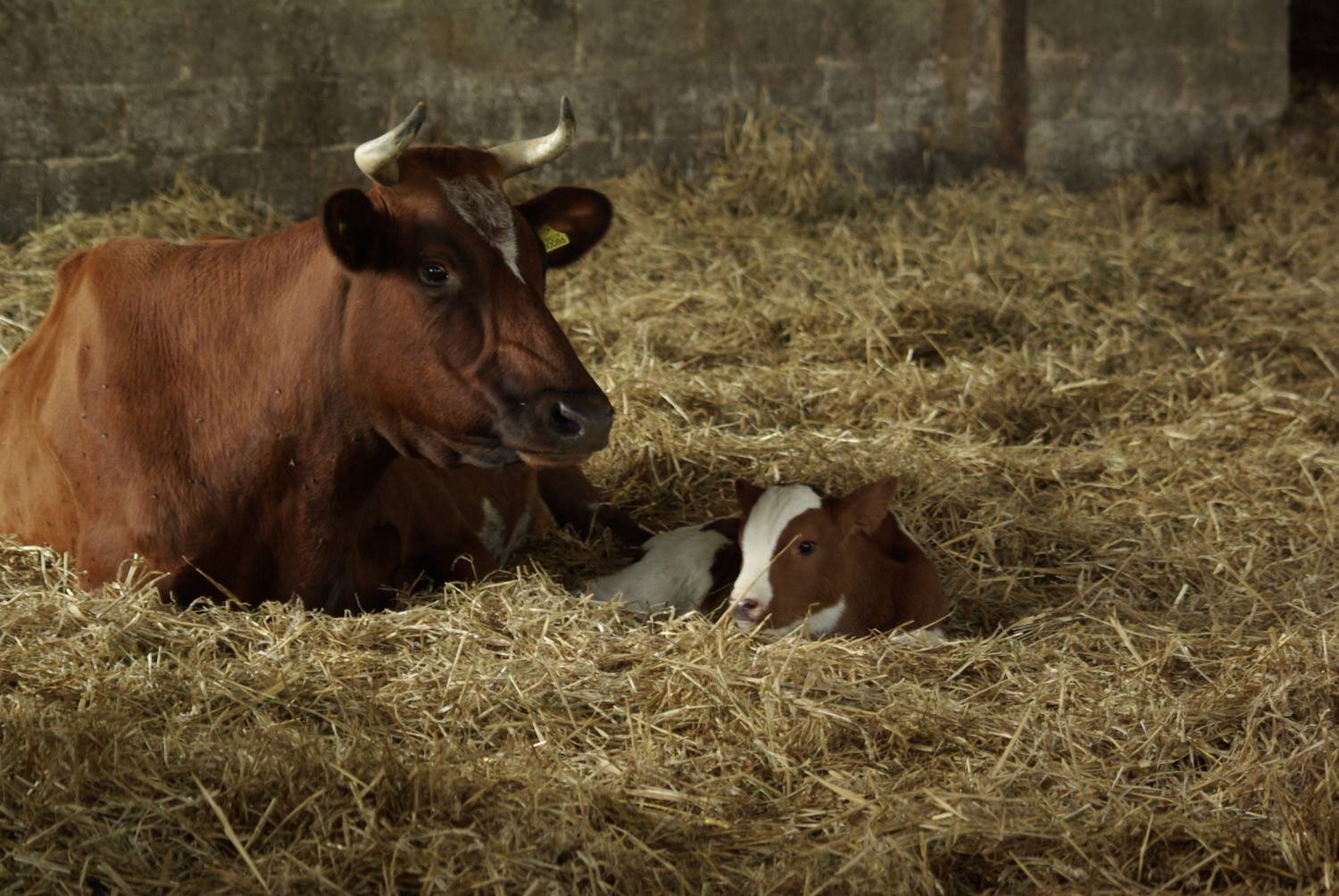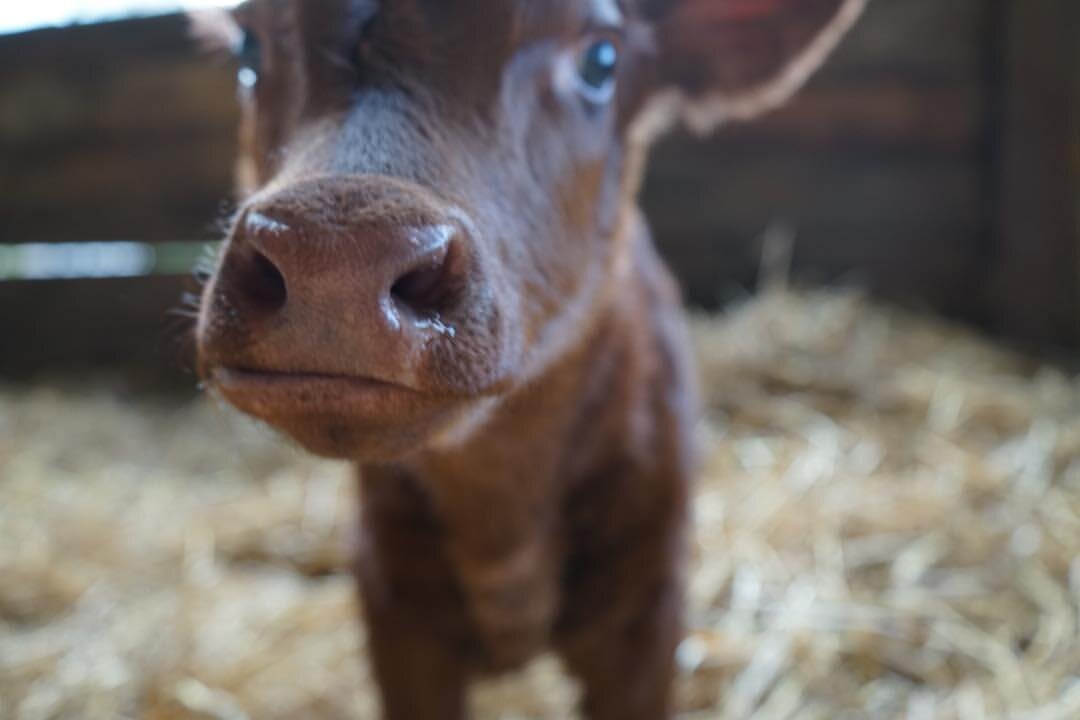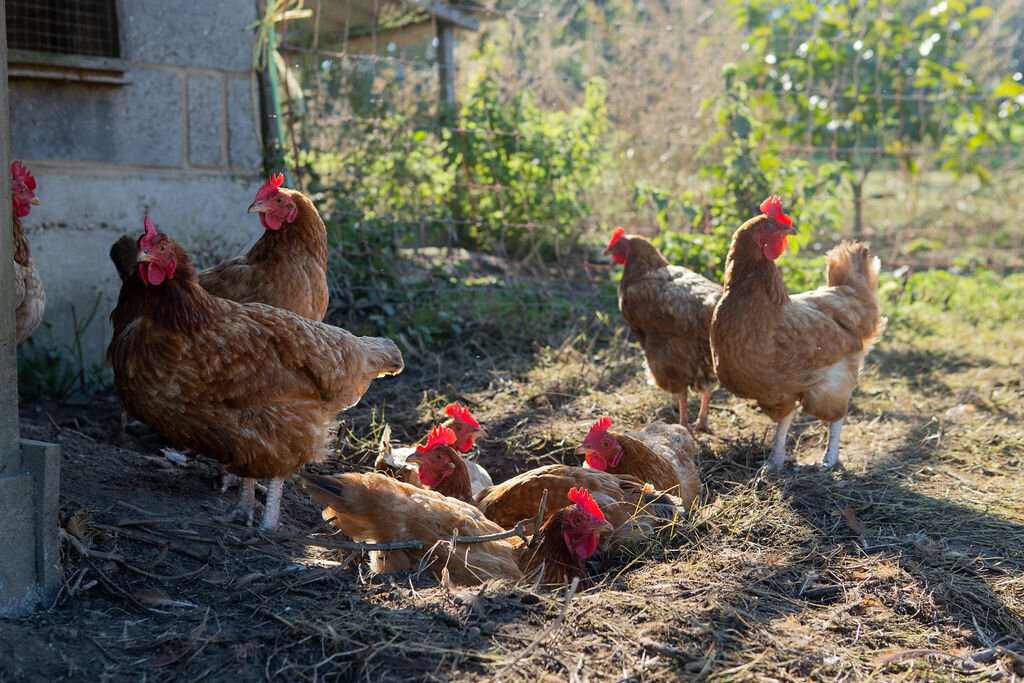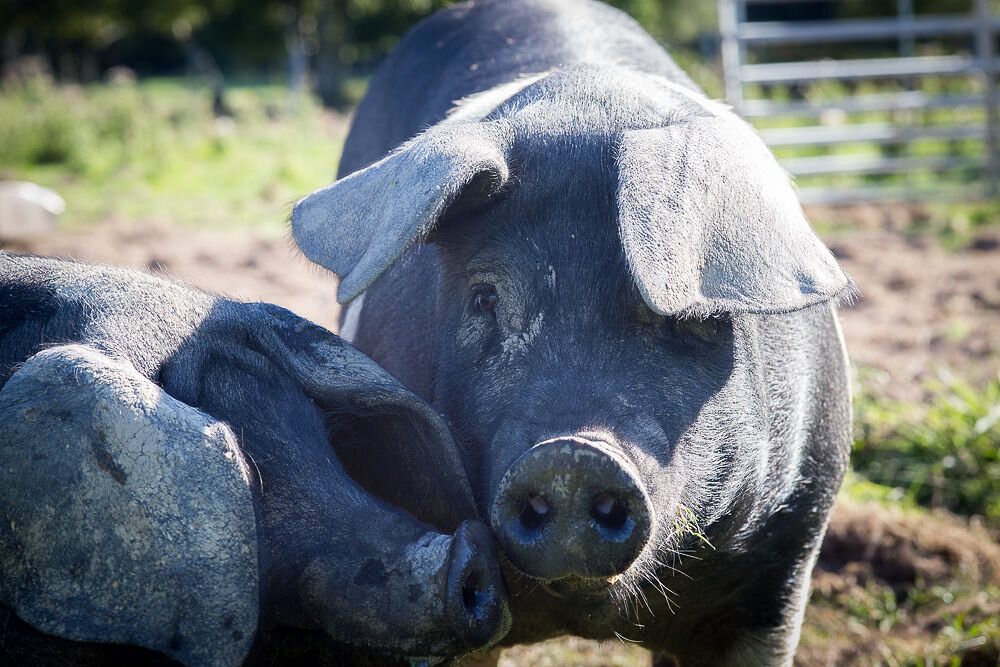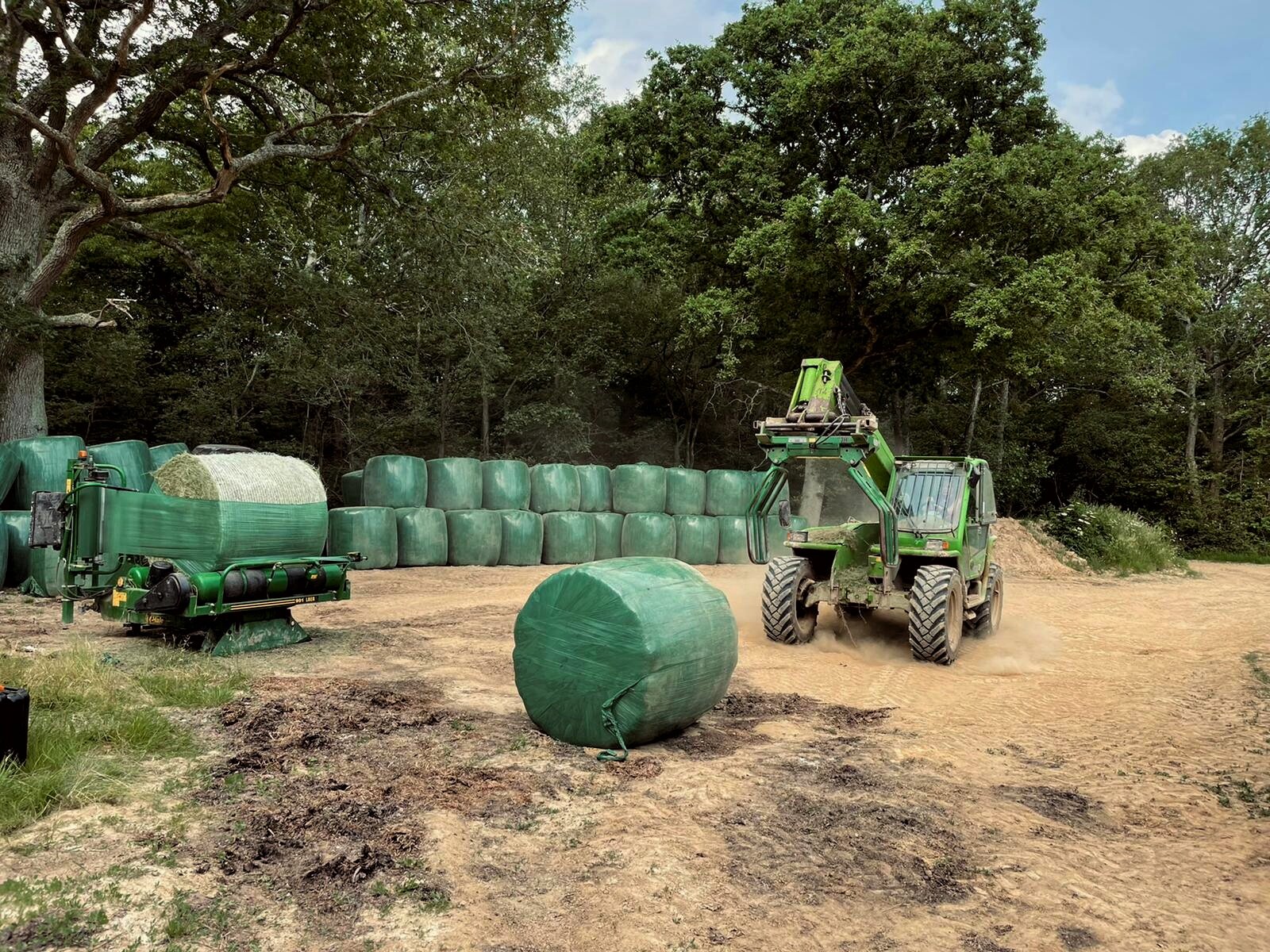
The Plaw Hatch Dairy herd is central to the health and function of the farm. We have 35 Meuse Rhine Issel (MRI) cattle, with a few cross Ayrshire, Brown Swiss and Montbeliard. We are a closed herd and all of the ladies were born on the farm; mothers, daughters, nieces and grand-daughters. MRI cows have amazing horns and a temperament suited towards our traditional farming. As our soils get too wet in the winter months, they are content to stay in the barns for 6 months of the year, during which they have lots of space and access to the yard for open air. They get excited as Spring approaches for when they are turned out to the fields. We cut our own hay and silage during the summer when they are out to pasture to keep them well fed in the barns during winter (they consume an astronomical amount!) During milking they are each given a scoopful of our home grown oats and some seaweed, it's not necessary for their diet but is a small and healthy treat for them. Each year we breed replacement heifers of which we keep about 6 a year. We run a Sussex bull (Wendell) with the herd; a very docile breed, indigenous, and with excellent beef.
LIVESTOCK

The Chickens
No farm is complete without poultry. We have about 400 laying hens. They are housed in different groups of free-range pasture, each with their own mobile house and cockerel. The hen housing is routinely moved to fresh ground to give them plenty of greens to peck and to keep down any pests that would otherwise build up. Small flocks and regular fresh land keep the vet at bay. The hens are fed on home-grown oats mixed with whey from our dairy and organic (gmo free) layers pellets. We buy the hens in at Point of Lay and rear them ourselves from there. Our delicious eggs are sold through the farm shop and come in fresh daily.
The Sheep
We currently have Lleyn, Romney and Jacob cross ewes at Plaw Hatch. The ewes lamb outside from late March; we shear the ewes in late May and wean the lambs at the beginning of July. The ewes then have time to rest before tupping (mating) in November. Some of our lambs are kept for breeding and the rest are processed by our butchery. We produce knitting wool, blankets, and organic sheepskins from our flock.
The Pigs
Pigs are a great asset to any dairy farm that makes cheese. The whey (a byproduct of the cheese-making process) is a great source of protein, which they thrive on, together with our oats and the odd treat from the garden. We have a mixture of heritage breeds; Tamworths, Durocs, and Large Blacks. They are great for turning the soil and regenerating the land. When the weather turns wet and cold we bring them into the barns and they spend their days foraging in the deep straw and silage so they are never bored.
ARABLE

Our homemade Biodynamic preparations are applied to the soils and growing crops to harmonise their existence within the landscape of the farm. Growing grain at Plaw Hatch Farm is a big challenge as we are on the edge of the Ashdown Forest and our land would much prefer to be woodland. The farmer’s task is to treat the land very carefully; feed it lots of compost and not expect too much of it. We do have land further away that is, in places, much more productive. At Plaw Hatch we have a 6 year ley followed by two years grain and on the better soils we have a 4 year ley followed by 4 years grain. Our cultivation philosophy is to do as little as possible to disturb the soil life, but enough to create the right seedbed for the up and coming seeds to be drilled.

